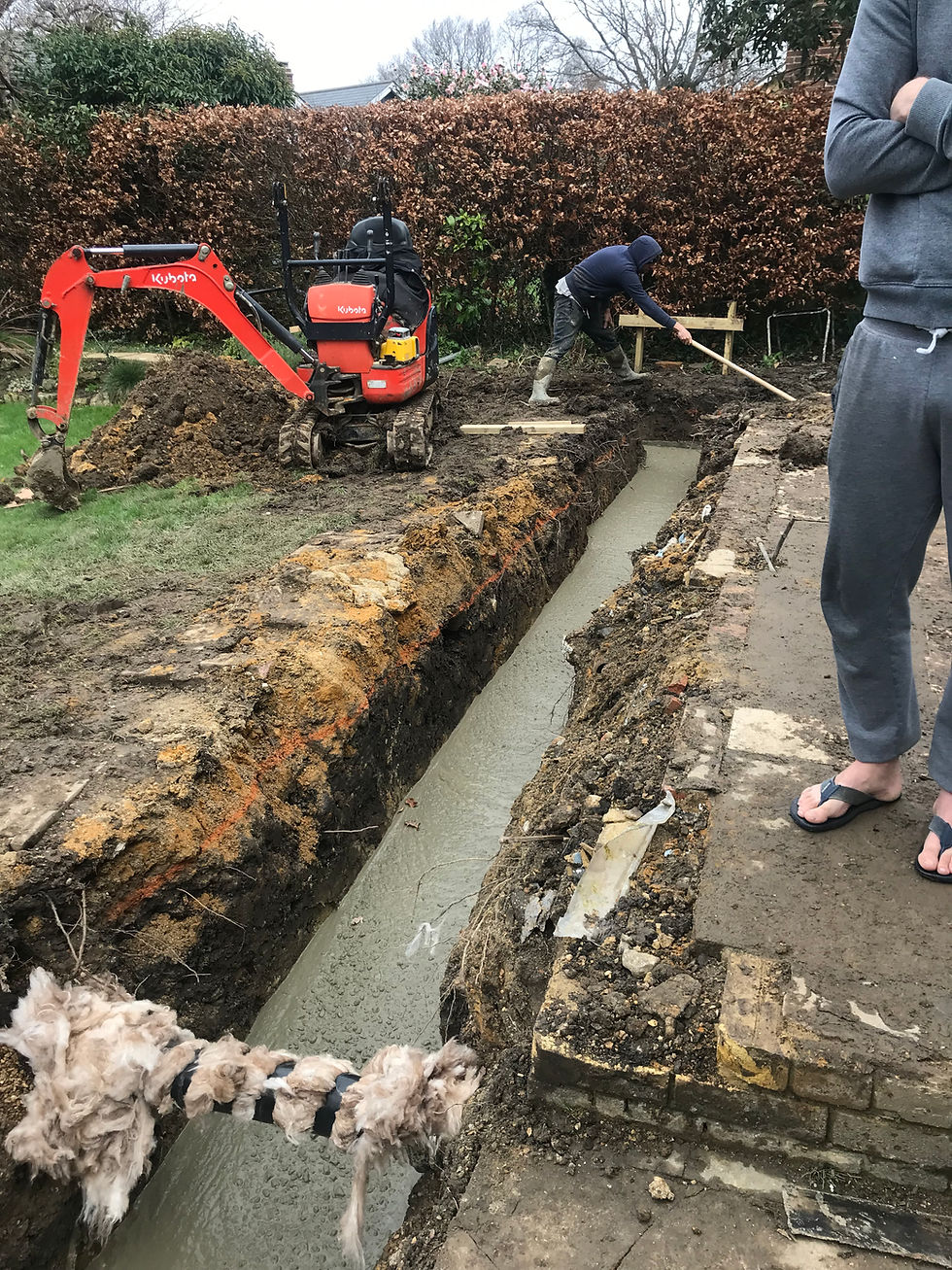How Interior Designers and Builders Work Together in Residential Projects
- sarah burrows
- Mar 17
- 2 min read
How Interior Designers and Builders Work Together in Residential Projects
I’ve been renovating properties for over 20 years and have worked with many builders on residential projects. My goal with this blog is not to teach you about construction but to give you insight into what’s involved when undertaking a house renovation or building an extension—and, most importantly, how an Interior Designer can support you through this process.
Renovating a home is an exciting yet complex journey, and having an Interior Designer on board can make a world of difference. We ensure that the final result is not only stunning but also practical, taking the pressure off you so that you can actually enjoy the process.
Why Collaboration Between Interior Designers and Builders is Essential
Interior Designers and builders work closely to bring a project to life, ensuring that both the aesthetic vision and structural integrity align seamlessly. A well-executed renovation isn’t just about beauty—it’s about functionality, precision, and smooth project management.
Here’s how we typically work together:
1. Initial Consultation & Planning
• The Interior Designer meets with the client to understand their vision, lifestyle needs, and budget.
• Builders are often involved early to assess feasibility, structural requirements, and construction costs.

2. Concept Development & Design
• The Interior Designer creates mood boards, layouts, and material specifications to establish the overall look and feel.
• Builders provide input on practical constraints, ensuring that the design aligns with plumbing, electrical layouts, and structural elements.
3. Technical Drawings & Specifications
• The Designer produces detailed plans for custom elements such as kitchens, bathrooms, built-in furniture, and lighting schemes.
• These are shared with the builder to ensure accurate execution and compliance with building regulations.
4. Site Visits & Collaboration During Construction
• The Interior Designer conducts regular site visits to oversee progress and address any issues.
• They liaise with tradespeople (carpenters, electricians, plumbers) to ensure materials, finishes, and installations match the design vision.

5. Problem-Solving & Adjustments
• Unexpected issues are common in renovations—whether it’s structural challenges or material delays.
• The Designer and builder collaborate to find solutions that maintain both the aesthetic and functional integrity of the space.

6. Final Installation & Styling
• Once construction is complete, the Designer brings in furniture, lighting, and accessories to complete the space.
• Every detail is fine-tuned to create a seamless, polished finish before the final handover.

Key to a Successful Collaboration
✔ Clear Communication – Regular updates between the Designer, builder, and client prevent misunderstandings.
✔ Mutual Respect – Recognizing each other’s expertise leads to a smoother and more efficient project.
✔ Flexibility – Being adaptable when challenges arise ensures the best possible outcome.
Final Thoughts
The best renovations happen when Interior Designers and builders work hand-in-hand, blending technical expertise with creative vision. This partnership ensures that your home isn’t just well-constructed—it’s a space that feels effortlessly beautiful and perfectly suited to your lifestyle.
If you’re planning a renovation and want to ensure your home reaches its full potential, I’d love to help guide you through the process.
Sarah Burrows Interiors



Comments